Overview
The Chongqing Liangjiang Collaborative Innovation Zone is a national pilot area for the Internet of Vehicles (IoV), aiming to create a 55-kilometer demonstration section for 5G based Cooperative Vehicle-Infrastructure System in the Longsheng area. The goal is to develop a new ecosystem for the IoV industry.
The China Mobile(Shanghai) Industrial Research Institute is a subsidiary of China Mobile, offering products and solutions for various industries. In the Chongqing project, it is building a 5G cloud control platform for vehicle-road collaboration. Using the EMQX MQTT platform and a network combining 5G, Beidou, and V2X, it gathers road and traffic information in the demo area to enable effective vehicle-road collaboration.
Requirements and Challenges
As the only mountainous city in the national pilot area for intelligent connected vehicles, the system has the following business requirements:
- Tunnel and Special Roads: The project covers 5.5 kilometers of open test roads (also serving as a demonstration route for autonomous buses), including 2 intersections, 2 T-junctions, and 1 tunnel, with complex and diverse road features.
- Autonomous Driving: Vehicles need to achieve intelligent connectivity and rich applications combining vehicle-road collaboration and autonomous driving.
- 3D Maps: Create a synchronized set that mirrors the real world utilizing 3D digital twins, providing dynamic virtual scenes that are displayable, measurable, and controllable.
- Multidimensional Interaction: Achieve digital information interaction among people, vehicles, roads, and networks.
- 5G Intelligent Connectivity: Extend application scenarios from connected scenarios to 5G+ connected scenarios for distinctive applications.
- Rapid System Deployment: Quickly establish connections and data links with devices from different manufacturers on roadsides and vehicles within the project.
These business requirements pose the following challenges to the construction of the vehicle-road collaborative cloud control platform:
- Secure Access for Massive On-board Units and Roadside Units: The cloud control platform needs to simultaneously connect a large number of devices, including roadside computing units (MEC), roadside communication units (RSU), and on-board communication units (OBU). Additionally, the platform must ensure secure device access through methods such as device keys, certificates, and identity authentication.
- High-Reliability, Low-Latency Communication for V2X Messages: The cloud control platform must access and process high-frequency data from roadside and on-board devices in real-time. It needs to enable reliable transmission of vehicle-road messages with low latency at the millisecond level through V2X message forwarding services.
- End-to-End Message Tracking and Stream Computing: Various types of data from each type of device in vehicle-road collaboration are uploaded at frequencies of 1-10Hz. The cloud control platform needs to process the continuously incoming dynamic data streams in real-time to enable specific V2X scenarios.
- Integration of Heterogeneous Data from Roadside Devices: MEC and RSU devices from multiple vendors require integration of heterogeneous data formats in cloud control platform applications.
Solution
The EMQX MQTT platform links the three main components of the vehicle-road collaborative construction: Vehicle, road, and cloud. All the related data will be transmitted through EMQX for both sending and distributing to or from the cloud. This achieves the following capabilities:
- Vehicle-side Connection and Data Collection: EMQX provides highly reliable and low-latency bidirectional vehicle-cloud communication. Vehicles report real-time status data through OBU, and the cloud platform simultaneously sends real-time V2X messages for different scenarios to the OBU, enabling collaborative autonomous driving applications.
- Roadside Connection and Data Collection: The project has connected roadside devices from multiple manufacturers using different data protocols, including cameras, radar, edge computing devices, etc. The data generated by these devices is transmitted to the roadside intelligent connected unit for computation and processing, and the processing results are reported to the cloud control platform.
- Application-side Consumption and Connection: EMQX connects roadside devices with diverse business applications on the cloud, enabling high-concurrency access to vehicle-road data. It supports traffic big data analytics, intelligent connected applications, and digital twin platforms with data forwarding capabilities.


Achievements
The project achieved intelligent driving in Chongqing's mountainous urban environment and created China's first "carbon-neutral" intelligent connected demonstration zone.
The cloud control platform developed for this project offers multiple capabilities, including travel services, smart vehicle management, and continuous evolution. It promotes the use of connected vehicles, providing convenient services to the public, businesses, and government entities.
